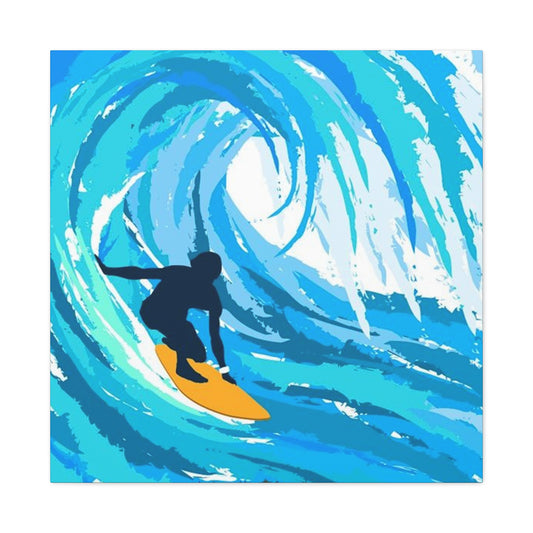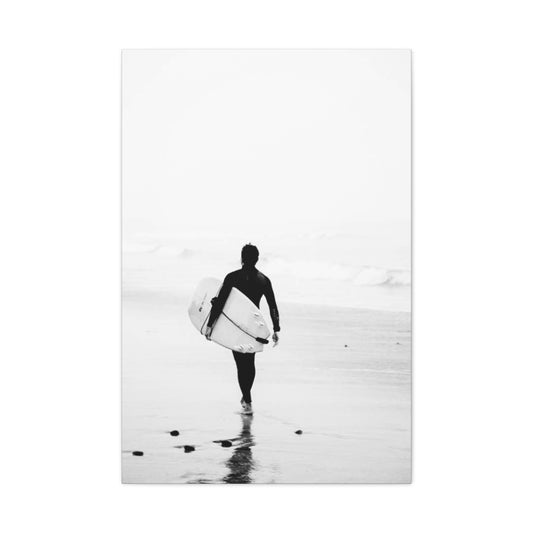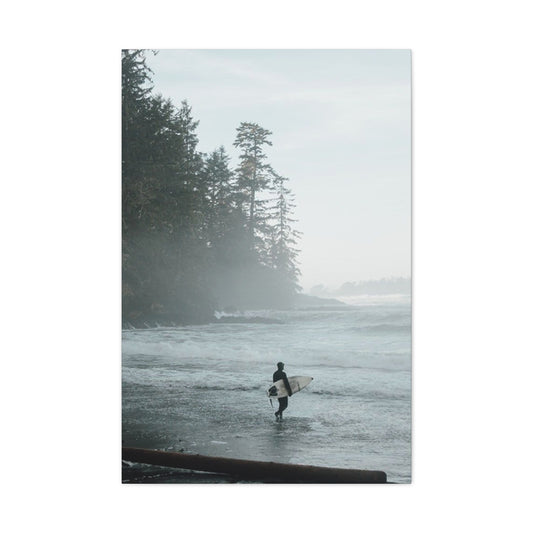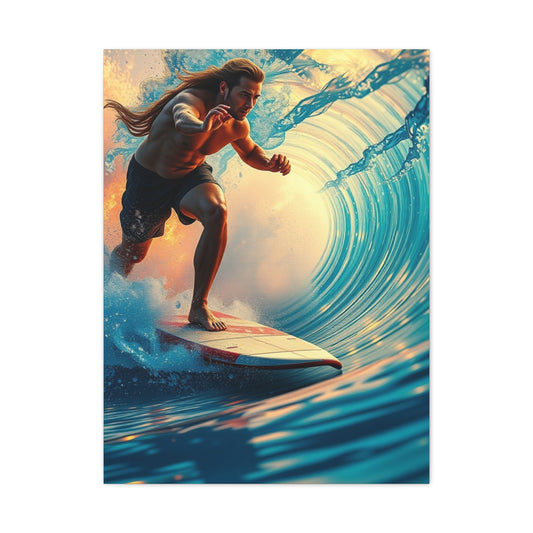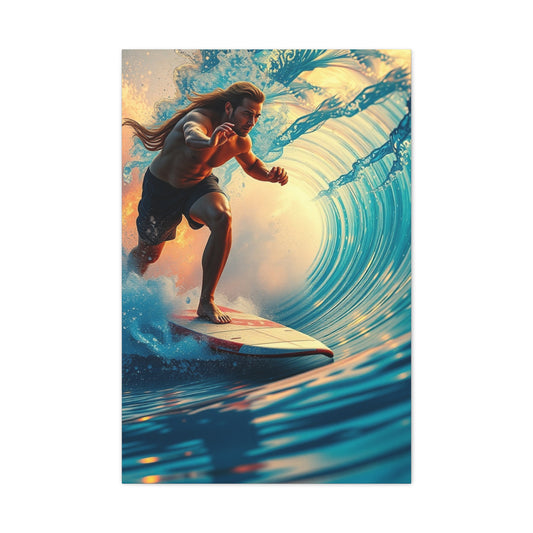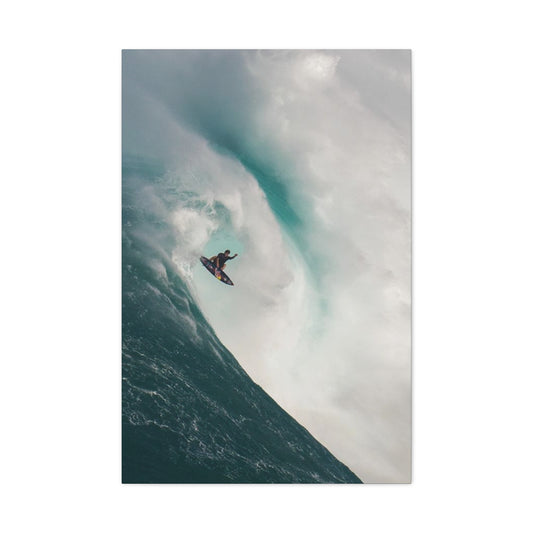Urban environments present extraordinary opportunities for photographers seeking to capture the essence of modern civilization. With approximately four-fifths of the American population residing in metropolitan regions, metropolitan imagery represents one of the most accessible and rewarding photographic disciplines available to practitioners at every skill level. The geometric complexity and architectural magnificence found within urban landscapes naturally appeal to human visual perception, as our cognitive processes inherently seek patterns and structural harmony in the visual world.
The challenge lies not merely in pointing a camera toward towering structures, but in crafting compelling visual narratives that transform ordinary cityscapes into extraordinary artistic statements. Urban environments demand technical precision, creative vision, and strategic planning to overcome the inherent obstacles of dense architecture, challenging lighting conditions, and visual chaos that characterizes metropolitan settings.
This comprehensive exploration delves into eleven fundamental strategies that will revolutionize your approach to urban imagery, whether you're embarking on your initial forays into this genre or seeking to refine and enhance your existing capabilities. Each technique addresses specific challenges while building upon fundamental principles that govern successful urban documentation.
Maintaining Perfect Horizontal and Vertical Alignment
Architectural precision forms the cornerstone of professional urban imagery, yet achieving perfectly aligned structures remains one of the most frequently encountered challenges for photographers working in metropolitan environments. Two primary issues plague urban photographers: tilted horizons and perspective distortion, both of which can instantly diminish the impact and professional appearance of otherwise compelling compositions.
Horizon misalignment occurs when photographers fail to maintain proper camera leveling during capture, resulting in structures that appear to lean unnaturally within the frame. While this issue can be corrected during post-processing with minimal image quality degradation, developing proper field techniques prevents unnecessary workflow complications and maintains maximum image resolution.
Perspective distortion, commonly referred to as keystoning, presents a more complex challenge that occurs when photographers angle their cameras upward or downward relative to their subjects, particularly when employing wide-angle lenses. This phenomenon causes vertical lines to converge dramatically, creating an unnatural appearance that suggests buildings are falling backward or forward within the frame.
The most effective solution involves utilizing specialized tilt-shift lenses, which allow photographers to maintain camera-to-subject parallel alignment while adjusting the plane of focus. These optical tools enable perspective correction at the capture stage, preserving maximum image quality and eliminating the need for extensive post-processing correction.
Alternatively, seeking elevated vantage points that permit level camera positioning relative to architectural subjects proves equally effective. Parking garages, pedestrian bridges, and nearby buildings often provide ideal shooting platforms that eliminate the need for extreme camera angles while maintaining compositional flexibility.
Professional-grade cameras often incorporate electronic leveling systems that display real-time horizon alignment information, while external bubble levels can be attached to camera hot shoes for precise horizontal reference. These tools prove invaluable when working in challenging environments where visual horizon references may be obscured or misleading.
Maximizing Wide-Angle Lens Potential
Wide-angle lenses represent the quintessential tool for urban documentation, enabling photographers to encompass vast architectural subjects within single frames while creating dramatic spatial relationships that emphasize the monumental scale of metropolitan environments. These optical instruments excel at capturing the overwhelming presence of urban landscapes while simultaneously introducing depth and dimensionality that transforms flat, two-dimensional images into immersive visual experiences.
The practical necessity of wide-angle lenses becomes apparent when working within confined urban spaces where physical distance from subjects remains severely limited. Towering skyscrapers, expansive plazas, and architectural complexes often require the comprehensive field of view that only short focal lengths can provide, making wide-angle lenses indispensable tools for complete subject documentation.
Beyond mere practical considerations, wide-angle lenses offer unique creative advantages through their ability to establish compelling foreground-to-background relationships. The near-far effect characteristic of short focal lengths allows photographers to incorporate interesting foreground elements while maintaining sharp focus throughout the entire depth of field, creating layered compositions that guide viewers through multiple spatial planes.
Street-level details such as manholes, architectural ornaments, sidewalk patterns, or urban furniture can serve as compelling foreground anchors that lead viewers toward distant architectural subjects. This technique transforms potentially static compositions into dynamic visual journeys that engage viewers and encourage extended contemplation.
Wide-angle distortion, often perceived as a limitation, can be embraced as a creative tool when used intentionally. The characteristic stretching effect that occurs at frame edges can emphasize architectural lines, create dramatic perspectives, and imbue static structures with apparent movement and energy.
Careful attention to lens quality becomes crucial when working with wide-angle optics, as inferior lenses may exhibit significant barrel distortion, vignetting, or corner softness that compromises image quality. Professional-grade wide-angle lenses incorporate sophisticated optical corrections that maintain image quality across the entire frame while minimizing common wide-angle aberrations.
Harnessing Telephoto Lens Compression Effects
In the realm of urban photography, selecting the appropriate lens plays a critical role in determining how a scene is captured. While wide-angle lenses excel at offering expansive views of cityscapes and architectural details, telephoto lenses are equally invaluable for their unique ability to manipulate spatial relationships. The compression effects created by long focal lengths result in striking, visually rich compositions that transform seemingly chaotic urban environments into organized, harmonious visual narratives.
Telephoto lenses allow for a profound reimagining of how the city’s architectural forms are perceived. By compressing the depth of the scene, these lenses make distant objects appear closer together, thereby eliminating the normal sense of depth and layering that can make urban photography seem cluttered. This technique can be used to create dense, compact compositions that emphasize patterns, repetitions, and the rhythmic qualities of architectural designs. The unique visual effect produced by a telephoto lens significantly alters how the viewer interprets the subject matter, often turning what might seem like a disjointed collection of buildings into an aesthetic, graphic composition.
Telephoto Compression in Urban Skylines
One of the most common and rewarding applications of telephoto lenses in urban photography is in the capture of city skylines. Traditionally, wide-angle lenses are employed to frame entire vistas and cityscapes, but they often introduce an overwhelming sense of space and depth, making distant objects appear too small. Telephoto lenses, on the other hand, excel at compressing the scene by effectively flattening perspective. This ability allows photographers to create images where multiple architectural elements, such as skyscrapers, appear stacked atop one another, forming a highly cohesive, almost abstract composition.
When shooting city skylines, the characteristic compression of a telephoto lens can eliminate distracting visual gaps between buildings, drawing attention to the density and diversity of urban architecture. By bringing distant objects closer together, telephoto lenses can turn a sprawling, chaotic skyline into a tightly-knit, visually impactful image that emphasizes the interplay between shapes, lines, and forms. The result is often a stunning graphic rendition of the cityscape, where every element of the scene feels intentionally placed, with the lens magnifying the intrinsic beauty of architectural variety.
Moreover, capturing city skylines with telephoto lenses can highlight the rhythm and repetition found in the repetitive geometric elements of urban structures. The design of windows, balconies, and repetitive architectural features can emerge more distinctly as telephoto lenses isolate and emphasize these elements, turning the cityscape into a visual tapestry where each detail contributes to a larger, cohesive design.
The Distance Advantage: Capturing From Scenic Overlooks
A significant advantage of using telephoto lenses in urban photography is the ability to photograph subjects from considerable distances without losing detail. Many of the most compelling viewpoints in a city, whether located on elevated highways, distant hills, or scenic overlooks, often require long focal lengths to capture subjects at the appropriate scale. With the expansive nature of urban landscapes, getting the right perspective on a building or landmark often means being situated far from the subject itself.
Telephoto lenses provide the perfect solution to this challenge by allowing photographers to photograph distant architectural subjects and cityscapes from high vantage points or other offbeat locations. The ability to capture an image of a landmark or distant building while preserving the integrity of its details and textures is a hallmark of telephoto photography.
These lenses allow the photographer to isolate parts of the city from a greater distance, offering a fresh perspective of urban elements that are typically ignored or obscured by wide-angle lenses. Whether capturing the architecture of far-off skyscrapers or focusing on the intricate details of distant streets, telephoto lenses give urban photographers the ability to extract striking compositions from the most unexpected locations.
Subject Isolation: Extracting Architectural Details
In the bustling, often chaotic environment of urban centers, subject isolation is one of the greatest advantages of telephoto lenses. The crowded nature of cityscapes can make it challenging to capture individual elements without the distraction of surrounding clutter. However, long focal lengths enable photographers to focus on specific architectural features or details by reducing the surrounding elements in the frame.
Using a telephoto lens to extract a single building or specific detail from the surrounding urban environment allows the photographer to distill the essence of a subject. This is particularly useful when capturing specific architectural features, such as intricate facades, bridges, or monuments, as the lens isolates these elements from the larger city context. Through selective framing and shallow depth of field techniques, telephoto lenses can create clear and dramatic compositions that isolate the subject from its surroundings, enhancing the architectural beauty and minimizing distractions.
By using a telephoto lens to zoom in on a single subject, the photographer is able to emphasize its texture, pattern, and form, allowing viewers to appreciate details that might otherwise go unnoticed. This approach can transform seemingly ordinary urban features into striking focal points within a composition, enhancing both the aesthetic quality and the narrative depth of the photograph.
Urban Rhythm and Repetition: Creating Graphic Patterns
One of the most captivating uses of telephoto lenses in urban photography is in capturing the rhythm and repetition inherent in architectural forms. Cities are built with a certain order and repetition, whether it’s the repetition of windows, doors, or facades, or the rhythmic patterns of streets, signage, and other infrastructural elements. Telephoto lenses, with their ability to flatten perspective, accentuate these patterns, turning them into graphic, almost abstract compositions.
By using telephoto compression, architectural elements that would normally seem distant or unrelated become intertwined. Buildings at different depths appear stacked together, creating visually interesting patterns of shapes and lines. For instance, rows of buildings may appear as though they are aligned side-by-side, their windows and architectural details forming a rhythmic, repeating pattern. This is an effective technique for emphasizing the harmony and geometric beauty that lies at the heart of urban landscapes.
When employing telephoto lenses to capture these visual rhythms, photographers often focus on symmetry and alignment, using the compression effect to bring order to the scene. This technique makes it easier to identify visual patterns within an urban environment, where often, the city’s complexity can seem overwhelming or disjointed. The result is a cohesive, visually captivating image where pattern and repetition take center stage, allowing viewers to appreciate the underlying order that shapes the urban environment.
Weather and Atmospheric Effects: Enhancing Urban Imagery
Weather conditions and atmospheric phenomena can add a layer of mystery and intrigue to telephoto urban imagery. The characteristic compression of telephoto lenses not only flattens perspective but can also be enhanced by weather conditions such as fog, haze, or atmospheric moisture. These elements create a sense of depth and layering that further amplify the effects of the lens, transforming an otherwise ordinary urban scene into a visually compelling composition.
Morning fog, for example, can add an ethereal quality to a cityscape by softening the edges of buildings and creating a natural visual separation between the foreground, midground, and background. The haze or pollution that often fills the urban air can act as a natural filter, giving the scene a soft, diffused quality that enhances the overall mood. This atmospheric haze is particularly effective in telephoto photography, where the flattened perspective makes the layering effect more pronounced, resulting in an almost dreamlike urban landscape.
In addition to atmospheric haze, heat shimmer, and the distortion caused by atmospheric temperature differences can become valuable creative elements. While traditionally seen as an obstacle in photography, these natural phenomena can soften harsh lines and edges, lending the urban scene an organic fluidity that contrasts beautifully with the geometric precision of architecture. The shimmering effect, often seen in hot urban environments, can add dynamic movement to otherwise static cityscapes, making the photograph feel alive and constantly in flux.
Telephoto Lenses as Tools for Abstract Urban Photography
Telephoto lenses offer photographers the opportunity to experiment with urban photography in abstract ways. The lens’ ability to compress and isolate elements within the scene enables photographers to take a more artistic approach to capturing urban environments. In this context, the focus shifts from documentary-style photography to a more creative exploration of forms, shapes, and compositions.
Using telephoto lenses in abstract urban photography allows for greater freedom in interpreting the city’s visual landscape. The lens eliminates the extraneous details that typically clutter a scene, allowing the photographer to focus on shapes, lines, and contrasts that might otherwise go unnoticed. This technique is perfect for capturing the intricate details of architecture, from the curves of bridges to the angles of rooftops, and transforming them into visually arresting compositions.
Abstract telephoto urban photography can also evoke emotion, with certain shapes and arrangements prompting a sense of harmony, tension, or nostalgia. This technique often invites viewers to experience the urban environment in an entirely new light, encouraging them to explore the city’s visual structure and aesthetic beauty beyond what is seen at first glance.
Capitalizing on Blue Hour Magic
Blue hour represents the golden period for urban imagery, offering a brief window when natural and artificial lighting achieve perfect balance, creating conditions that cannot be replicated at any other time. This transitional period, lasting approximately forty-five minutes following sunset, provides optimal illumination for capturing both architectural details and city lighting in single exposures.
During daylight hours, building illumination remains invisible against bright natural lighting, while complete darkness renders architectural details invisible except where directly illuminated by artificial sources. Blue hour provides the ideal compromise, offering sufficient ambient illumination to reveal architectural forms while allowing artificial lighting to register visibly within the exposure.
The rapidly changing light conditions during blue hour demand careful timing and preparation. Light intensity diminishes continuously throughout this period, requiring constant exposure adjustments to maintain optimal image brightness. Photographers must work efficiently to capture multiple compositions before optimal lighting conditions disappear entirely.
Color temperature variations during blue hour create rich, complex lighting scenarios that add visual interest and emotional depth to urban imagery. The warm tones of artificial lighting contrast beautifully against the cool blues of twilight sky, creating complementary color relationships that enhance visual appeal and emotional impact.
Traffic patterns often intensify during blue hour as commuters return home, providing opportunities to incorporate vehicle light trails as dynamic compositional elements. Long exposure techniques can transform moving vehicles into flowing streams of light that add energy and movement to static architectural compositions.
Cloud formations during blue hour can dramatically enhance urban imagery by providing textural contrast against geometric architecture while reflecting and diffusing available light throughout the scene. Dramatic sky conditions often develop during transitional lighting periods, offering opportunities for spectacular atmospheric displays that complement urban subjects.
Window lighting in office buildings creates fascinating patterns during blue hour, as interior illumination begins to register against darkening exterior conditions. These glowing windows transform building facades into enormous light sculptures that reveal human activity and architectural scale simultaneously.
Implementing Strategic Leading Lines
Leading lines represent one of the most powerful compositional tools available to urban photographers, offering the ability to direct viewer attention, create depth perception, and establish visual flow within complex metropolitan scenes. Urban environments naturally provide abundant linear elements that can be strategically incorporated to enhance compositional impact and viewer engagement.
The human visual system inherently follows linear elements within images, making leading lines an effective tool for controlling how viewers explore and interpret photographic compositions. Streets, sidewalks, building edges, architectural details, and infrastructure elements all provide potential leading line opportunities that can be leveraged to create more compelling urban imagery.
Vehicle light trails represent particularly dynamic leading line opportunities during evening and night photography sessions. Long exposure techniques transform moving vehicles into flowing streams of light that create powerful directional elements leading toward primary subjects. Highway overpasses, curved roads, and intersection approaches provide ideal locations for capturing dramatic light trail leading lines.
Architectural elements such as staircases, escalators, railings, and building edges naturally create strong linear components that can be positioned to lead viewers toward key compositional elements. These structural features often provide multiple leading line opportunities within single compositions, creating complex visual pathways that encourage extended viewer engagement.
Water features including rivers, canals, and waterfront areas provide natural leading lines that guide attention toward distant urban subjects. Reflective water surfaces can double the impact of architectural leading lines by creating mirror images that reinforce directional flow within compositions.
Infrastructure elements such as bridges, power lines, railway tracks, and pipeline networks create powerful linear elements that can be incorporated as leading lines. These urban arteries naturally connect different areas of metropolitan environments, making them ideal compositional tools for linking foreground and background elements.
The effectiveness of leading lines depends heavily on their positioning within the frame and their relationship to primary subjects. Lines that originate from frame edges and lead toward central subjects prove most effective, while lines that lead away from subjects or terminate at frame edges may actually detract from compositional strength.
Mastering Distraction Elimination Techniques
Urban environments present inherent challenges through their dense, chaotic nature, making distraction elimination a critical skill for successful metropolitan imagery. Learning to identify and remove unwanted elements separates novice photographers from experienced practitioners who understand how to extract compelling subjects from busy urban contexts.
Elevated shooting positions represent one of the most effective distraction elimination strategies available to urban photographers. Bridges, parking structures, building rooftops, and elevated walkways provide vantage points that allow photographers to shoot over street-level clutter while maintaining clear sight lines to primary subjects.
Telephoto lenses excel at subject isolation through their narrow field of view and shallow depth of field capabilities. Long focal lengths enable photographers to extract specific architectural elements from busy urban scenes while rendering distracting background elements pleasantly out of focus.
Long exposure techniques can effectively eliminate moving distractions such as pedestrians, vehicles, and other transient elements that might otherwise compromise compositional clarity. Extended shutter speeds blur moving subjects into invisibility while maintaining sharp definition of static architectural elements.
Careful framing and cropping decisions during capture can eliminate unwanted elements more effectively than post-processing corrections. Taking time to evaluate frame edges and adjust composition to exclude distracting elements prevents workflow complications and maintains maximum image resolution.
Weather conditions can naturally eliminate many urban distractions while adding atmospheric interest to metropolitan imagery. Fog obscures distant clutter, rain creates interesting surface reflections while deterring crowds, and snow simplifies complex scenes by covering unwanted details.
Time of day significantly impacts distraction levels within urban environments. Early morning and late evening hours typically feature reduced pedestrian traffic and vehicle movement, providing cleaner shooting conditions for architectural subjects.
Seasonal variations affect urban distraction levels substantially. Winter months often provide cleaner compositions as vegetation dies back, outdoor dining areas close, and general street activity decreases. Conversely, summer months may offer vibrant street life that enhances rather than detracts from urban imagery.
Optimizing Solar Positioning Strategies
Understanding and leveraging solar positioning represents a fundamental skill for successful urban imagery, as lighting direction dramatically affects architectural appearance, shadow patterns, and overall compositional impact. The sun's position varies both throughout individual days and across seasonal cycles, creating constantly changing lighting conditions that can make or break urban photographs.
Front lighting, achieved by positioning the sun behind the photographer, provides even illumination across architectural subjects while minimizing harsh shadows that might obscure important details. This lighting approach proves particularly effective for documentary-style urban imagery where comprehensive subject detail remains paramount.
Side lighting creates dramatic shadow patterns that emphasize architectural texture, dimension, and form. Building facades illuminated from the side reveal surface details, architectural ornamentation, and structural elements that might otherwise appear flat under front lighting conditions.
Backlighting, while challenging to execute properly, can create spectacular silhouette effects that emphasize building profiles and architectural skylines. This approach works particularly well during blue hour when ambient illumination provides enough detail in shadow areas to maintain architectural definition.
Solar angles vary dramatically with seasonal changes, creating different lighting opportunities throughout the year. Summer months feature high sun angles that create minimal shadows during midday hours, while winter months provide low-angle lighting that extends golden hour conditions and creates more dramatic shadow patterns.
Urban canyon effects, created by tall buildings that block direct sunlight, create unique lighting conditions that can be leveraged for atmospheric imagery. These shadowed areas often feature soft, even illumination that flatters architectural details while creating moody atmospheric conditions.
Reflected light from building surfaces can provide secondary illumination that fills shadow areas and creates more balanced exposures. Glass facades, metallic surfaces, and light-colored building materials can serve as natural reflectors that enhance lighting quality throughout urban environments.
Pursuing Elevated Perspectives
Elevated viewpoints transform ordinary urban scenes into extraordinary visual experiences by providing perspectives that most people never encounter in daily life. Height adds drama, reveals patterns, and offers comprehensive views that showcase the true scale and complexity of metropolitan environments.
Commercial observation decks in prominent skyscrapers provide convenient elevated access, though these locations often feature crowds and restrictions that limit photographic flexibility. Planning visits during off-peak hours and researching specific deck orientations and window conditions can maximize shooting opportunities from these premium locations.
Public parking structures frequently offer excellent elevated vantage points without commercial restrictions or admission fees. Upper levels of parking garages often provide unobstructed views while allowing photographers to work at their own pace without time constraints.
Natural elevation changes including hills, bluffs, and elevated parks provide ideal shooting platforms that combine height advantages with natural foreground elements. These locations often feature multiple vantage points that allow photographers to explore various compositions while maintaining elevated perspectives.
Pedestrian bridges and elevated walkways offer unique linear perspectives that showcase urban infrastructure while providing moderate elevation above street level. These structures often feature interesting architectural elements that can be incorporated as compositional frames or foreground elements.
Helicopter and drone perspectives represent the ultimate elevated viewpoints, though regulatory restrictions and cost considerations may limit accessibility. When available, aerial perspectives reveal urban patterns and relationships that remain invisible from ground level.
The psychological impact of elevated perspectives cannot be understated. Height creates a sense of power and control while offering views that feel exclusive and privileged. These emotional responses translate directly into more engaging and memorable imagery.
Safety considerations become paramount when seeking elevated shooting positions. Secure footing, proper equipment handling, and awareness of environmental hazards ensure that pursuit of dramatic perspectives doesn't compromise photographer safety or equipment security.
Incorporating Aquatic Elements
Water bodies naturally attract human settlement, making waterfront locations prime destinations for compelling urban imagery. Rivers, lakes, harbors, and coastal areas provide multiple photographic advantages that enhance both the visual appeal and compositional strength of metropolitan documentation.
Reflective surfaces double the visual impact of architectural subjects by creating mirror images that add symmetry and balance to urban compositions. Still water conditions produce perfect reflections that can be used to create powerful symmetrical arrangements, while moving water creates abstract reflection patterns that add energy and movement.
Long exposure techniques transform moving water into smooth, ethereal surfaces that provide dramatic contrast against rigid architectural elements. Extended shutter speeds blur wave action, tidal movement, and flowing water into silk-like textures that add organic fluidity to geometric urban environments.
Foreground simplification represents another significant advantage of waterfront shooting positions. Large bodies of water eliminate complex foreground clutter while providing clean, unobstructed areas that allow architectural subjects to dominate compositions without competing visual elements.
Dynamic atmospheric conditions often develop over water bodies, creating dramatic sky formations that enhance urban imagery. Fog, mist, and cloud formations frequently form over water surfaces, providing atmospheric elements that add mood and visual interest to metropolitan scenes.
Maritime infrastructure including bridges, piers, boats, and waterfront developments provide additional compositional elements that can be incorporated to enhance urban imagery. These water-related structures often feature interesting architectural details and industrial character that complement urban themes.
Tidal variations in coastal cities create changing water levels that reveal different compositional opportunities throughout daily cycles. Low tide conditions may expose interesting foreground elements such as pilings, rocks, or beach areas, while high tide creates different reflection opportunities and shoreline relationships.
Strategic Shoot Planning Methodologies
Successful urban imagery rarely occurs through random chance encounters. Professional results demand systematic planning that coordinates optimal location, timing, equipment, and atmospheric conditions to achieve desired photographic outcomes. This methodical approach maximizes shooting efficiency while increasing the probability of capturing exceptional images.
Location scouting represents the foundation of effective shoot planning, requiring photographers to identify potential subjects, evaluate shooting positions, and assess accessibility considerations before committing to specific sessions. Digital mapping tools, street view applications, and preliminary reconnaissance visits help photographers develop comprehensive understanding of shooting environments.
Optimal timing considerations extend beyond simple golden hour calculations to include seasonal variations, weather patterns, and urban activity cycles. Different times of year offer varying advantages including seasonal decorations, architectural modifications, and atmospheric conditions that can dramatically enhance urban imagery.
Weather forecasting plays a crucial role in urban shoot planning, as atmospheric conditions dramatically affect both lighting quality and compositional opportunities. Dramatic weather often produces the most compelling imagery, making weather monitoring an essential planning component.
Equipment preparation ensures that photographers arrive at locations with appropriate gear for anticipated shooting conditions. Lens selection, tripod requirements, filtering needs, and battery considerations should be addressed during planning phases rather than discovered during active shooting sessions.
Backup planning accommodates the inevitable variations that occur during urban shooting sessions. Alternative compositions, secondary locations, and contingency timing options provide flexibility when primary plans encounter unexpected obstacles or changing conditions.
Permission requirements and legal considerations may affect shooting plans in certain urban locations. Private property restrictions, commercial photography permits, and security considerations should be researched and addressed during planning phases to avoid complications during shooting sessions.
Maximizing Polarization Filter Benefits
Circular polarizing filters represent one of the most valuable accessories for urban imagery, offering multiple advantages that significantly enhance image quality and visual impact. These optical tools function similarly to polarized sunglasses, selectively blocking scattered light waves to create clearer, more saturated images with enhanced contrast and reduced atmospheric haze.
Atmospheric clarity improvements prove particularly valuable when photographing distant urban subjects or working in hazy conditions common to metropolitan environments. Industrial pollution, humidity, and atmospheric particles scatter light waves that reduce contrast and image clarity. Polarizing filters eliminate much of this scattered light, resulting in cleaner, more defined architectural details.
Reflection management represents another significant advantage of polarizing filters when working around water, glass surfaces, and metallic building materials. These filters can selectively reduce or eliminate unwanted reflections while preserving desired reflection effects through careful filter orientation adjustment.
Sky enhancement through polarization creates dramatic contrast between architectural subjects and background sky areas. Polarizing filters can darken blue skies significantly, making white or light-colored buildings appear more prominent against dramatically darkened backgrounds.
Color saturation improvements occur naturally through polarization, as scattered light reduction allows true subject colors to appear more vibrant and saturated. This effect proves particularly valuable when photographing colorful architectural elements or urban signage that might otherwise appear washed out.
Variable polarization control allows photographers to adjust filter effects continuously by rotating the polarizing element. This adjustability enables precise control over reflection elimination, sky darkening, and color saturation enhancement to match specific compositional requirements.
The technical considerations of polarizing filter use include potential light loss requiring exposure compensation and possible vignetting with wide-angle lenses. Understanding these limitations ensures proper technique while maximizing filter benefits.
Conclusion
Metropolitan environments offer unprecedented opportunities for photographers seeking to document the complexity and beauty of human civilization. These eleven essential techniques provide comprehensive foundation knowledge that addresses the primary challenges encountered in urban imagery while offering practical solutions that can be immediately implemented to improve photographic results.
Mastering urban imagery requires patience, persistence, and systematic skill development. Each technique builds upon fundamental principles while addressing specific challenges unique to metropolitan environments. Success comes through consistent practice, careful observation, and willingness to experiment with different approaches until personal style and technical proficiency develop naturally.
The urban landscape continues evolving constantly, providing endless opportunities for photographers willing to explore, experiment, and push creative boundaries. Whether documenting architectural marvels, capturing the energy of city life, or revealing hidden beauty within metropolitan environments, these techniques provide essential tools for creating compelling visual narratives that celebrate the complexity and grandeur of urban civilization.











